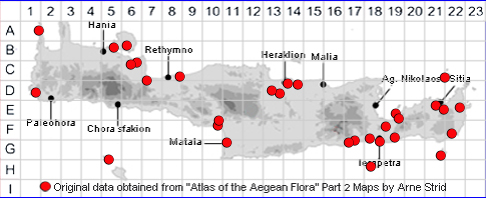
SPECIES DESCRIPTION
ATRIPLEX HALIMUS
Family and Genus:- See- AMARANTHACEAE
Common Name:- Shrubby orache
Homotypic Synonyms:- Chenopodium halimus, Obione halimus, Schizotheca
halimus.
Meaning:- Atriplex (L) A name used by the Roman naturalist and philosopher
Pliny, from the ancient Greek meaning black and intertwined.
Halimus (Gr) With silvery-grey foliage, orache-like.
General description:- Erect, stout, shrubby perennial.
Stems:-
1) Up to 150 cm, older branches with pale grey bark, young shoots farinose to
greyish-green, angled.
Leaves:-
1) 1-4 x 0.4-3 cm, alternate (rarely a few opposite), persistent, shortly-petiolate
ovate-rhombic, elliptical-lanceolate to deltoid-subhastate, usually entire, rarely
with 2 obscure lobes or teeth, broadly cuneate to attenuate at the base, obtuse-
rounded to mucronate at the apex, coriaceous, farinose
Flowers:-
1) Inflorescence, terminal, paniculate, 10-40 cm, with the flowers in dense remote
clusters.
2) Bracts, small or absent.
3) Perianth segments, in the male flowers 5, c. 0.8 x 0.6 mm, oblong-obovate,
lanuginose
4) Stamens, 5.
a) filaments, glabrous c. 1 mm.
b) anthers yellow.
5) Bracteoles, ± free, sessile, orbicular-ovate to reniform, 2-4 mm, accrescent to 4-
6mm in fruit, entire or dentate, smooth or rarely muricate-tuberculate at the
centre.
Fruit:-
1) Seed, vertical, strongly compressed, suborbicular, 1.0-1.5 mm, diam.
a) testa dark brown, pitted.
Key features:-
1) Shrubby perennial.
2) Bracteoles, reniform to orbicular, orbicular-ovate or rhombic-orbicular, not lobed.
3) Plant erect, usually more than 50 cm.
4) Leaves, entire, rarely dentate.
Habitat:- Rocky, sandy and clayey coastal habitats, sublittoral slope with dry open
shrubby vegetation occasionally to 200 m. along roads and ruderal habitats.
Distribution:- Widespread on Mediterranean coasts, extending to tropical Africa.
Scattered on Crete mainly around coastal regions.
Flowering time:- June-Nov
Photos by:- Giorgos Pantakis
